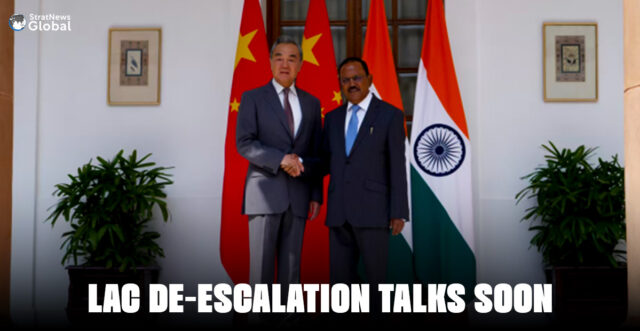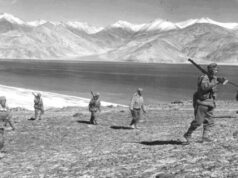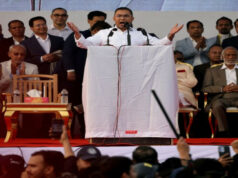Indian and Chinese military leaders will begin talks soon to start the process of pulling back their forces along the Line of Actual Control (LAC) in Eastern Ladakh following last week’s high-level discussions in New Delhi, sources have told Bharat Shakti. The troop withdrawal or de-escalation is seen as the second step in the 3D formula (disengage, de-escalate and de-induct) envisaged in the discussions at the highest levels between the two sides.
Disengagement Completed Last Year
The first step of disengagement of formations from eyeball-to-eyeball positions at several friction points along the LAC in Eastern Ladakh was carried out gradually. The last of the disengagement took place in October 2024, when troops facing each other at Depsang and Demchok stepped back and both sides resorted to the pre-2020 patrolling patterns in the two areas.
However, de-escalation was still pending as India’s External Affairs Minister (EAM) Dr S. Jaishankar said in his opening statement in talks with his Chinese counterpart Wang Yi on August 18: “…The basis for any positive momentum in our ties is the ability to jointly maintain peace and tranquillity in the border areas. It is also essential that the de-escalation process move forward.”
Large Troops Unsustainable
Since the summer of 2020, both sides have amassed troops in excess of 60,000 after Chinese aggression along different locations in Eastern Ladakh. Several offensive formations, armour and artillery guns were moved close to the LAC by both sides along with massive infrastructure upgrade in their respective areas. Sustaining such a large body of troops in high-altitude areas has been taking a toll on both the armies, besides creating uncertainty and tension on the border, given their offensive postures.
Three New Arrangements
However, now the two armies are beginning to plan for withdrawal of their troops from locations close to the LAC to areas deemed as peacetime bases. This move comes in the wake of the detailed negotiations between the two Special Representatives, India’s National Security Advisor (NSA) Ajit Doval and China’s Foreign Minister Wang Yi.
Following the talks, three new arrangements have been agreed upon, as detailed in a press note by India’s Ministry of External Affairs (MEA). It said, in parts that both sides agreed to:
- Setting up an Expert Group, under the Working Mechanism for Consultation and Coordination on India-China Border Affairs (WMCC), to explore Early Harvest in boundary delimitation in the India-China border areas;
- Setting up a Working Group, under the WMCC, to advance effective border management in order to maintain peace and tranquillity in India-China border areas;
- Creation of General Level Mechanisms in eastern and middle sectors, in addition to the existing General Level Mechanism in western sector, and holding an early meeting of the General Level Mechanism in the western sector.
Finally, the press note says, “Use the (above) border management mechanisms at diplomatic and military levels to carry forward the process of border management and discuss de-escalation, beginning with the principles and modalities thereof.”
Time-consuming Affair
Sources say so far both sides were finding it difficult to arrive at a common definition on what de-escalation meant. China was insisting on an equidistant withdrawal of troops. However, India was not in agreement given the difference in terrain and asymmetry in infrastructure facilities on either side of the LAC. India pointed out, for instance, a 300-km withdrawal of forces on either side is not equidistant in reality since the level of infrastructure on either side differs substantially besides stark difference in the topography. Much like the disengagement process that took over 40-months of intense negotiations, talks to achieve mutually satisfactory de-escalation are expected to take substantial time and effort, sources pointed out. Once de-escalation is achieved, both sides will look at de-induction of forces to their permanent locations, sources added.
Early Harvest: Low Hanging Fruit First?
Other questions are also being asked in the wake of the detailed press note. One, what kind of early harvest both sides are looking at on the boundary issue? Could it be an exchange of maps of the less controversial middle sector eventually leading to delineation and demarcation of all parts of the boundary?
After one feeble attempt to exchange maps for the middle sector of the Line of Actual Control (LAC) way back in 2002, the two countries have never gone down that path again. Two, what kind of new border management protocols are likely to emerge from the two new working groups under the WMCC decided last week? For five years, China watchers have pointed out, most protocols under previous agreements were violated by China.
Corps Commander Talks For All Sectors
One significant point of agreement in last week’s negotiations is to extend the Corps Commanders (or one step lower) talks mechanism to the other two (middle and eastern) sectors too. It is also not yet clear which of the three Corps Commanders (commanding 3, 4 or 33 Corps) or their subordinates in the eastern sector will be entrusted with that responsibility from the Indian side. Also, in the middle sector, will the Uttar Bharat (UB) Area Commander, a Lt General, be tasked to lead the talks since there is, so far, no Corps Commander looking after that part of the boundary?
Many such queries remain but India and China, aware of the changing geopolitical equations, have begun talking again leading to frequent interactions at the highest level. That itself is a good start.
Nitin A. Gokhale is a media entrepreneur, one of South Asia's leading strategic affairs analyst and author of over a dozen books so far on military history, insurgencies and wars.
Starting his career in journalism in 1983, he has since led teams of journalists across media platforms.
A specialist in conflict coverage, Gokhale has covered the insurgencies in India’s North-East, the 1999 Kargil conflict and Sri Lanka’s Eelam War IV between 2006-2009.
Gokhale now travels across the globe to speak at seminars and conferences, and lecture at India’s premier defence colleges. He has founded three niche portals, Bharatshakti.in, stratnewsglobal.com and Interstellar.news.





